The Constellation Leo, the lion
Click on image for full size
Leo
Leo, the lion, is easy to find because his head looks like a backward
question mark with the bright star
Regulus at the bottom.
Regulus, Leo's brightest star, means "little king" in Latin. This
star is one of the brightest stars in the spring sky, and it has a
sparkling blue color.
Although the ancient Greeks and Romans saw the shape of a lion in this
constellation, the ancient Chinese saw the shape of a horse. If you
use your imagination, maybe you can, too!
Leo is visible from February through June. Cancer sets to the east and Virgo is to the west. Hydra and Crater are below.
You might also be interested in:

How did life evolve on Earth? The answer to this question can help us understand our past and prepare for our future. Although evolution provides credible and reliable answers, polls show that many people turn away from science, seeking other explanations with which they are more comfortable.
...more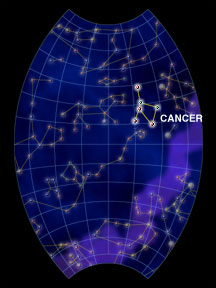
The constellation Cancer is a crab. Look for Cancer from December through June. It's hard to see Cancer because the stars are so dim. To find Cancer, first find Gemini and Leo. Cancer is right between
...more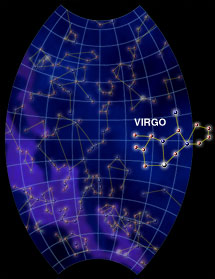
The constellation Virgo is The Maiden. People thought it was Athena, Artemis, Persephone or Demeter. She is carrying a grain of wheat and a staff. Can you tell it's a person in the picture? The maiden
...more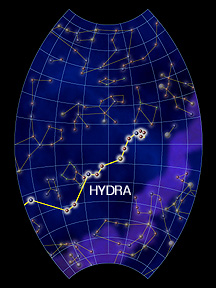
Hydra, the sea serpent, may be the longest and largest of all constellations, but its stars are very faint. It is so long that four constellations run along its northern side. These are Cancer, Leo, Virgo
...more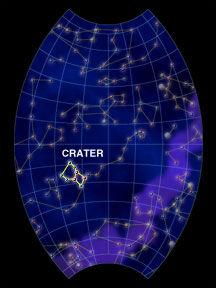
The constellation Crater is known as the Cup! The stars in Crater are very faint, so it is hard to see. Crater is between Leo and Hydra. Corvus the Crow is next to it. You can see Crater from March through
...more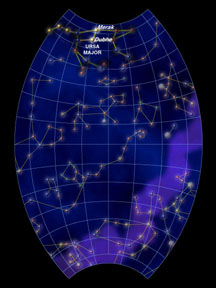
Windows Scientists found twelve new stars! No, not really! But they did create twelve new pages about some of the brightest stars in the night sky. Some of the constellations are Leo, Ursa Major and Virgo.
...more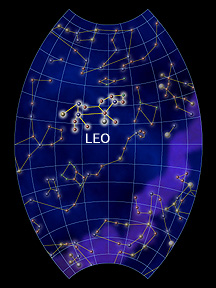
The Leonids meteor shower is going to be real big this year around November 17/18th. It can be seen from anywhere in the northern hemisphere. The name "Leonids" comes from the constellation Leo. The meteors
...more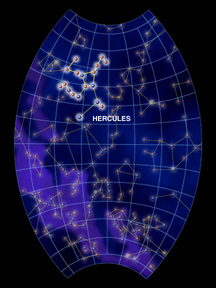
Hercules was a great warrior in Greek mythology. From the northern hemisphere he can be seen kneeling in the sky during Spring. From the southern hemisphere, he appears low in the north. Four bright stars
...more














